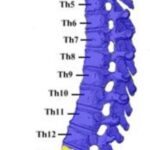What is a Stroke?
A stroke, sometimes called a “brain attack,” occurs when blood flow is cut off to certain areas of the brain. This can be caused by a blood clot blocking an artery, or when a small blood vessel bursts. When the brain does not receive enough blood, the brain cells begin to die. Depending on the location and severity of the stroke, the damage can be fairly minor, such as weakness of the limbs, or more serious, such as paralysis, loss of ability to speak, or death. Nearly 800,000 people will suffer a stroke in the coming year, resulting in an estimated 137,000 deaths.
Symptoms of a Stroke
Some common symptoms of a stroke include:
- A feeling of weakness or numbness in arms, legs or face; this is often only on one side of the body.
- Feeling confused or having difficulty speaking or understanding what others are saying
- Vision problems with one or both eyes
- Dizziness or problems with walking, balance or coordination
- Bad headache
Often, when a person suffers a stroke, they will not realize what is happening. The symptoms may be slight, and they may not get help until it is too late.
A Simple Test for Stroke Symptoms
If you think someone may have suffered a stroke, here is a simple test. You can remember what to do by the first three letters of stroke, S T R. Another acronym is FAST, which stands for Face, Arms, Speech and Time. Time refers to the fact that it is critically important to get medical help for a stroke victim as quickly as possible.
Smile- Ask the person to smile. Stroke victims will often have paralysis on one side of their face, causing their smile to be lopsided.
Talk- Ask the person to repeat a simple sentence. If they have had a stroke, their speech may be slurred or confused.
Raise both arms- Ask the person to raise both arms over their head at the same time. One arm may drift downwards if they have had a stroke.
A stroke victim may not have all of these symptoms. If the person has difficulty with any one of these activities, call 911 immediately.
Some stroke risk factors can be controlled, while others cannot. Controllable stroke risk factors involve lifestyle and treatable medical conditions, such as:
- Smoking
- Drinking
- Obesity
- Lack of exercise
- Diabetes
- High blood pressure
- High cholesterol
- Irregular heartbeat
- Atherosclerosis
- Cardiovascular problems
Uncontrollable stroke risk factors include:
- Family history of stroke
- Age- increases over 55
- Gender- higher risk for men
- Race- higher for African American, Asian/Pacific Islander and Hispanic
- Previous stroke
You can assess your risk of having a stroke by answering the questions on the Stroke Risk Scorecard developed by the National Stroke Association.
For more information, see the National Stroke Association website .




